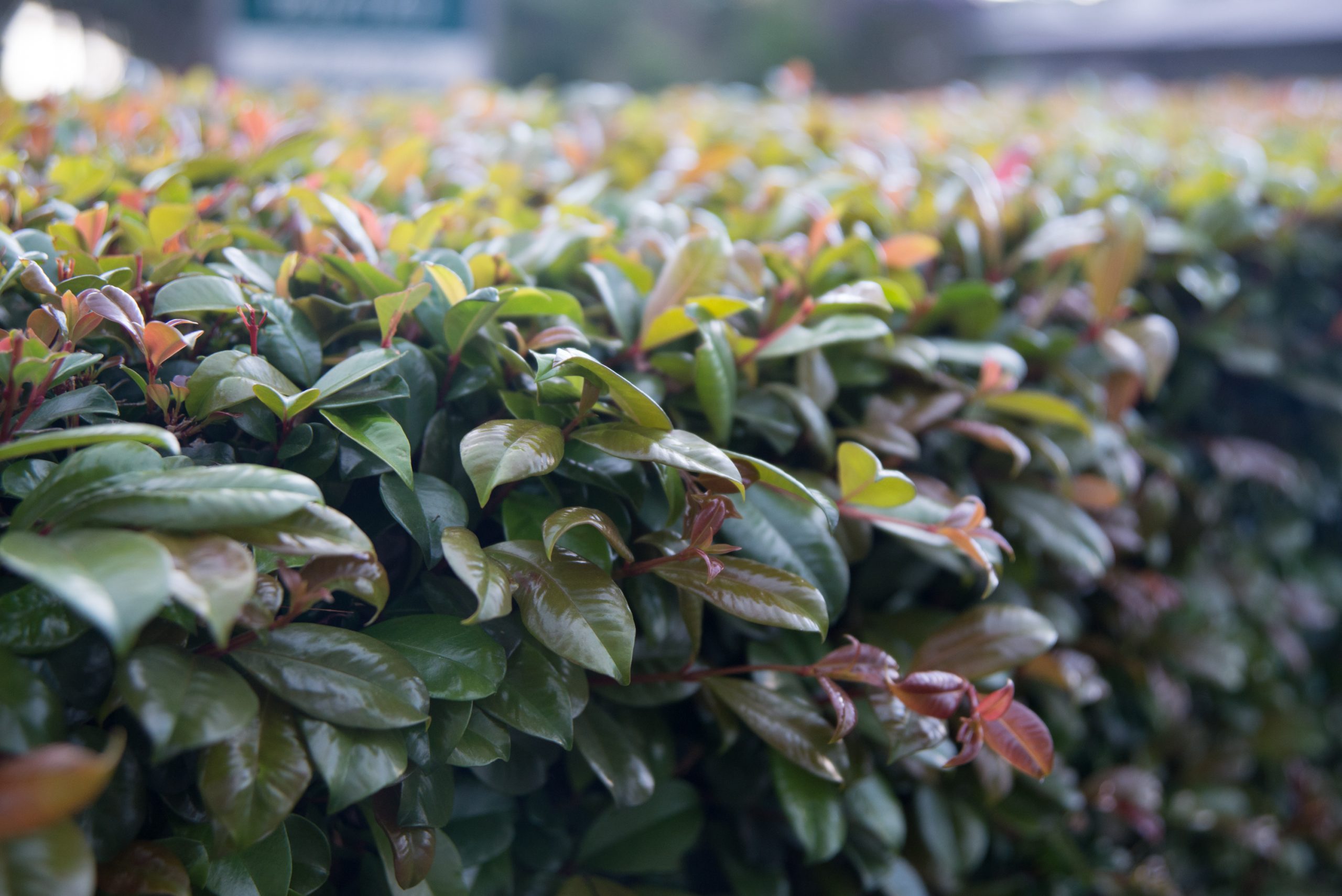
04 Oct Hedging: Lilly Pilly
Lilly Pilly are considered one of the fastest growing ways to make a hedge.
There are lots of different forms – with different heights, different leaf types and different colours to suit all sorts of hedge styles and locations.
The most common types of lillypilly are Waterhousea, Syzygium and Acmena, and these each have many different species. The key to choosing the right lillypilly is to consider your desired result.
Varieties
Waterhousea are larger growing varieties with most forms growing in excess of 6 metres, and are traditionally grown as trees. These are ideal for screening 2 storey buildings or where there is space for a larger tree.

Syzygium is the largest group and contains common forms which grow from 1.5m to 4-5m. These varieties include, Cascade, Resilience and Big Red. Syzygium varieties are the one of the fastest growing types of hedges. Some forms of Syzygium are psyllid resistant and can be trimmed to a neat square hedge or allowed to grow in its natural shape.

Acmena (fine leaf lilly pilly) are generally a little slower growing than other varieties, but have the advantage of strong coloured new growth. It contains small growing forms from 50cm such as Allyn Magic or Minnie Magic, to larger specimens such as Cherry Surprise and Firescreen. All Acmena are considered Psyllid resistant. Use these for hedging with less trimming, and a splash of colour.

PHOTO: https://www.gardeningwithangus.com.au/acmena-smithii-allyn-magic-lilly-pilly/
Conditions and Care
Lilly pilly thrive in full sun conditions – to keep the plant nice and bushy, good sunlight is the key.
Lilly pilly can handle a range of soil types, including clay, but it can make them grow a little slower. Ideal soils have good drainage and plenty of nutrition.
Lilly pilly love water – so ensure that plants, especially new ones, are watered regularly.
If making a hedge, trim from an early age. Regular light trimming will keep your plant growing all over, and avoid holes and gaps. It will also help keep foliage all the way to the bottom of the plant, for a thick, dense hedge.
Fertilise regularly with an organic based fertiliser during the growing season (Spring through to Autumn).


No Comments